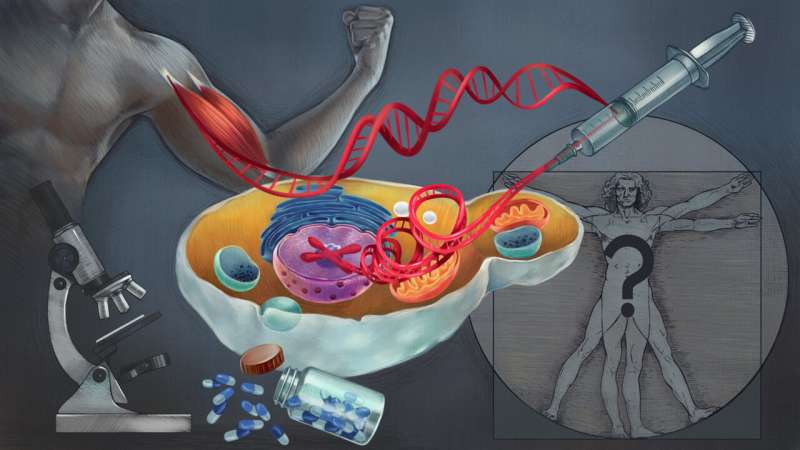Building human muscle genes in the DNA of baker's yeast

Biotechnologist Pascale Daran-Lapujade and her group at Delft University of Technology managed to build human muscle genes in the DNA of baker's yeast. This is the first time researchers have successfully placed such a vital human feature into a yeast cell. Their research was published in Cell Reports.
The feature that Daran-Lapujade's lab added to yeast cells is governed by a group of ten genes that humans cannot survive without; they contain the blueprint for a so-called metabolic pathway—a process that breaks down sugar to capture energy and construct cellular building blocks inside muscle cells. This process plays a role in many diseases such as cancer, meaning that the modified yeast could serve as a tool in medical research. "Now that we understand the full process, medical scientists can use this humanized yeast model as a tool for drug screening and cancer research," Daran-Lapujade says.
Humans and yeast are similar
According to Daran-Lapujade, there's a lot of similarity between a yeast and a human-being: "It seems weird, since yeast live as single cells and humans consist of a substantially more complex system, but the cells operate in a very similar way." Therefore it is quite common in science to transplant human genes in a yeast. Because researchers can get rid of all other interactions there might be in the human body, yeast provides a clean environment where they can study just one process.
"As compared to human cells or tissues, yeast is a fantastic organism for its simplicity to grow and its genetic accessibility: its DNA can be easily modified to address fundamental questions." Daran-Lapujade explains. "Many pivotal discoveries such as the cell division cycle, were elucidated thanks to yeast."
Humanized yeast
Previously, Daran-Lapujade's group succeeded in engineering artificial chromosomes that work as a DNA platform for building new functions into yeast. From there, they wanted to see how far they could go with adding multiple human genes and entire metabolic pathways, and if the cells would still function as a whole. "What if we take the same group of genes that controls the sugar consumption and energy production of human muscles into yeast?" Daran-Lapujade wondered. "Can we humanize such an essential and complex function in yeast?"
With surprising ease, Ph.D. students and co-first authors Francine Boonekamp and Ewout Knibbe, were able to engineer a humanized yeast. "We didn't just transplant the human genes into yeast, we also removed the corresponding yeast genes and completely replaced them with the human muscle genes," Daran-Lapujade explains. "You might think that you cannot exchange the yeast version with the human one, because it's such a specific and tightly regulated process both in human and yeast cells. But it works like a charm."
Humanizing further
The researchers have worked together with Professor Barbara Bakker's lab (University Medical Center Groningen), where they could compare the expression of human genes in yeast and in their native human muscle environment using lab-grown human tissue cells. The properties of human enzymes produced in yeast and in their native human cells were remarkably similar, supporting the value of the new humanized yeast as models for human cells.
This one process is just a small part of the human metabolism; there are many more similar processes between yeast and human cells that could be studied in humanized yeasts. While Daran-Lapujade focuses on the fundamental and technological aspects of engineering yeast, and thus does not plan to study applications of the humanized yeast herself, she hopes to collaborate with other scientists who are interested in using the tool. "This is just the starting point," she says, "we can humanize yeast further and step by step build up a more complex human environment in yeast."
More information: Francine J. Boonekamp et al, Full humanization of the glycolytic pathway in Saccharomyces cerevisiae, Cell Reports (2022). DOI: 10.1016/j.celrep.2022.111010
Journal information: Cell Reports
Provided by Delft University of Technology





















